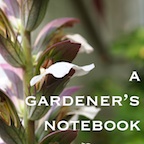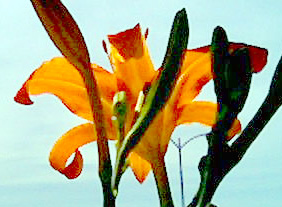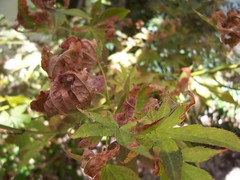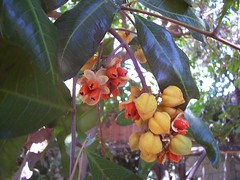While my old AGN columns are still available on the web site (you can find an index of them here, if you wish), most of you will have never read them, unless you happened to stumble across them via Google or other search engine.
I am going to reach back into the archives, much as I do with my other column and podcast, Career Opportunities, and re-post those columns that still seem applicable.
I'm interested in hearing your comments and questions regarding the columns, and whether I should continue to repost them. You can send email directly to agn@welchwrite.com or post your thoughts as comments here, on the web site. -- Douglas
From the AGN Archives, August 1996...
Refurbishing an older gardenThis June, my wife, Rosanne, and I achieved the "American Dream." We purchased our first house. While we had not planned on it, we also achieved the re-birth of our lives as gardeners.
I grew up on a small farm in northern Ohio and spent most of my summers helping in the fields or the large gardens both my father and my grandmother planted each year. These were the prototypical vegetable gardens idolized in Peter Rabbit and other children's classics. They included the usual compliment of cabbage and carrots, potatoes and peas. Some of the best memories of my childhood revolve around those long summer days digging in the dirt.
It was a dramatic change to go from a small apartment with a few houseplants to hundreds of square feet of garden with plants I knew little or nothing about. Even so, it was the garden that attracted us to this home in the first place.
The first time we drove by our soon to be house, we were enthralled. It looked so different from its neighbors with its hedges of azalea and boxwood, golden coreopsis and beautiful pink roses. Two large fir trees, live Christmas Trees from holidays past, and a mature elm stood guard over all. The backyard held a hidden Japanese garden with Mikado and JFK roses, bonsai shrubs, many trees and even its own miniature red garden bridge. We loved what we saw, both inside and outside the house.
Other prospective buyers who had visited the house were not so charitable. "Oh, we love the house, but we would have to get rid of that garden. That would be way too much work," said one prospective buyer to the Realtor while the owner stood nearby. I can't imagine saying that in front of the owner, even if I was thinking that to myself. We saw the garden as a positive point, not a negative.
So started our adventure. In the last several months we have worked hard to establish our patterns for watering and maintenance. While we have removed a few dead plants, we are avoiding planting anything new until we see exactly what will appear in the spring. Everywhere I have turned earth recently appears to be filled with bulbs of every type and description. This alone is sure to turn our spring into an adventure.
The previous owner was kind enough to give me a tour of the garden before we took possession of the property. She also left us innumerable photos of both the house and the gardens as they changed over the years. Early photos show a backyard with a dead lawn and a lone, despondent apricot tree which we heard from a neighbor was part of the land before the subdivision was built. While the owner knew the names of most of the plants others were unknown. This gave me a starting point but also sent me scrambling for some form of reference guide to learn how to care for those plants she identified and to identify those plants she could not.
I happened upon several books to start me on my way. The first was
Sunset's Western Garden Book. Often called "The Gardening Bible", this reference book offers comprehensive listings for most of the typical garden plants grown in the western states. It offers identification, Latin and common names and care information as well as ways to combat pests and what types of plants might be best for your area.
The next book will prove to be my guide in this and future seasons.
Pat Welsh's Southern California Gardening: A month-by-month guide has already proven itself invaluable by providing a reference specific to Southern California. While my subscriptions to Martha Stewart Livingand Country Living might contain important gardening information, they are hopelessly biased to parts of the country that experience hard winters. I don't need information on helping my roses survive the winter. I need to know how to keep them happy through these 100+ degree days that a Southern California summer always brings. Welsh's book includes monthly checklists that help to remind you what tasks need to be performed in all the major areas including planting, pruning, feeding and watering.
I hope this journey through my garden will assist and encourage you on your own travels. In future months I will discuss happenings in my garden, additional reference materials, insect, pests, opossums, squirrels and even ways to use the Internet and other online services to share your gardening joys and woes with others throughout the world.
Technorati Tags:
garden,
gardening,
hobby,
california,
grow,
build,
make,
howto,
how-to,
outdoors





 I just got new cell phones for the family and they come with the typical cameraphone. It doesn't take very good shots, but it does allow you to capture those "spur of the moment" shots you might have missed before.
I just got new cell phones for the family and they come with the typical cameraphone. It doesn't take very good shots, but it does allow you to capture those "spur of the moment" shots you might have missed before.



